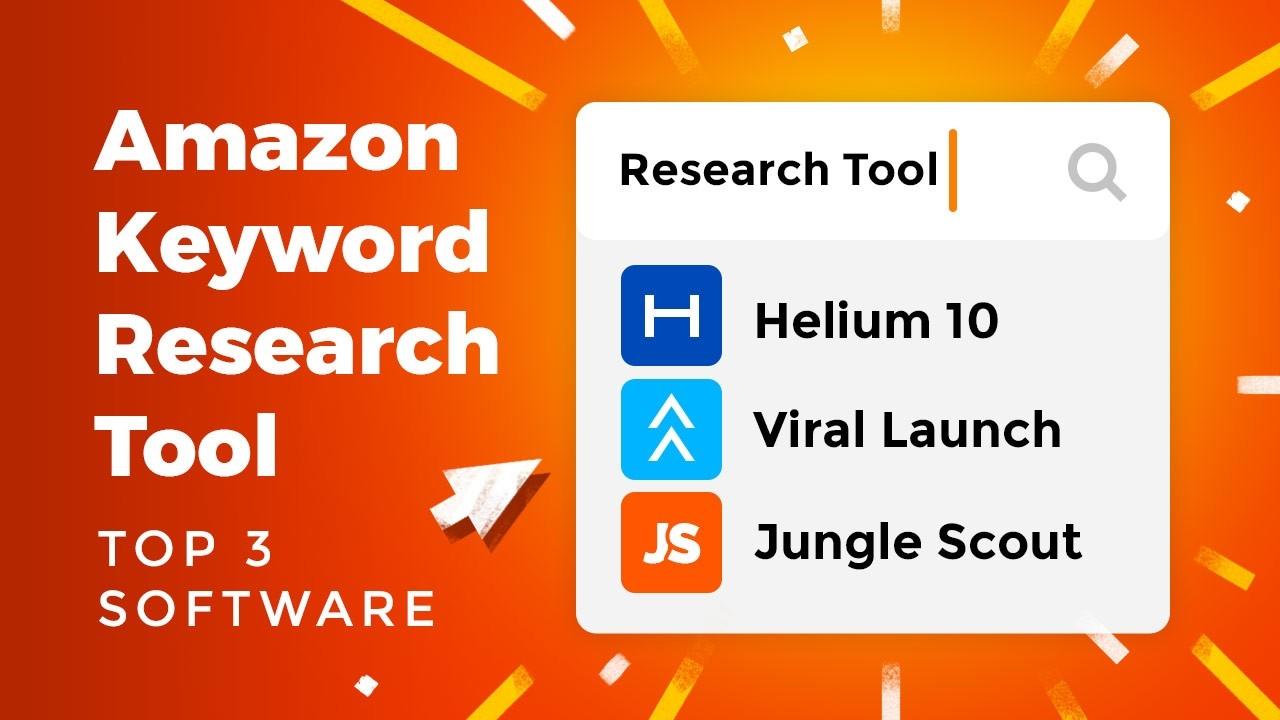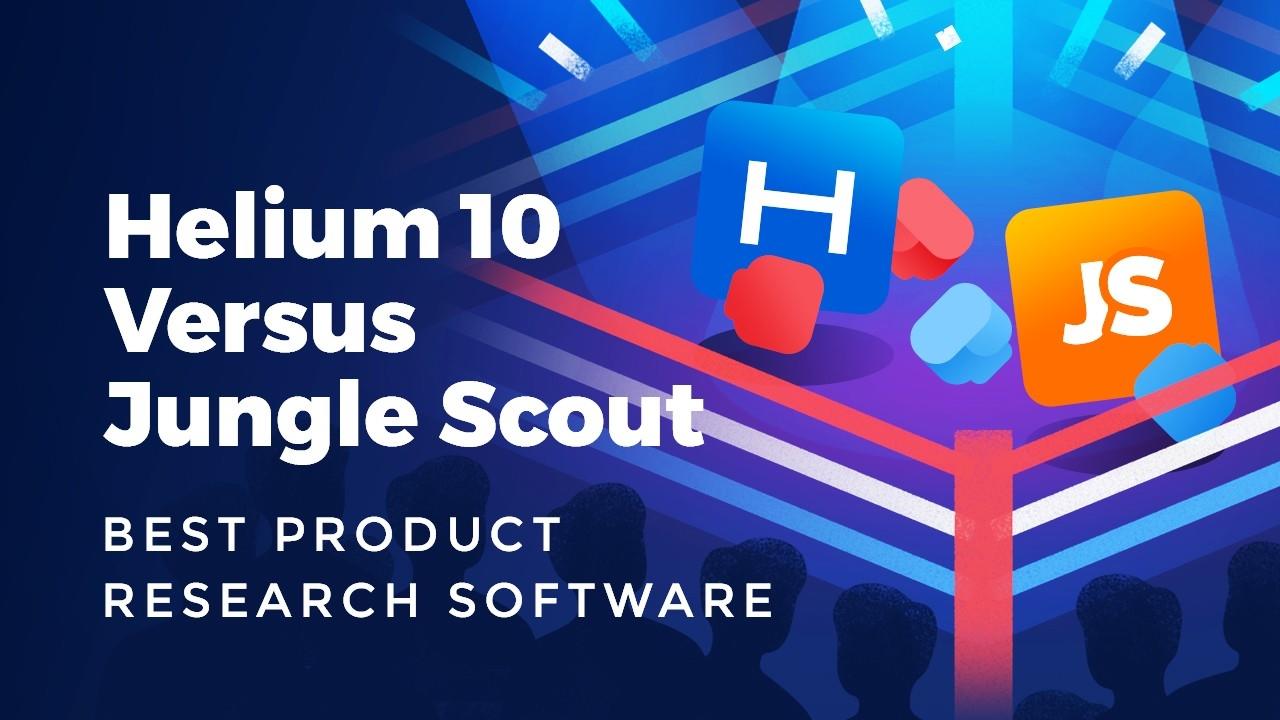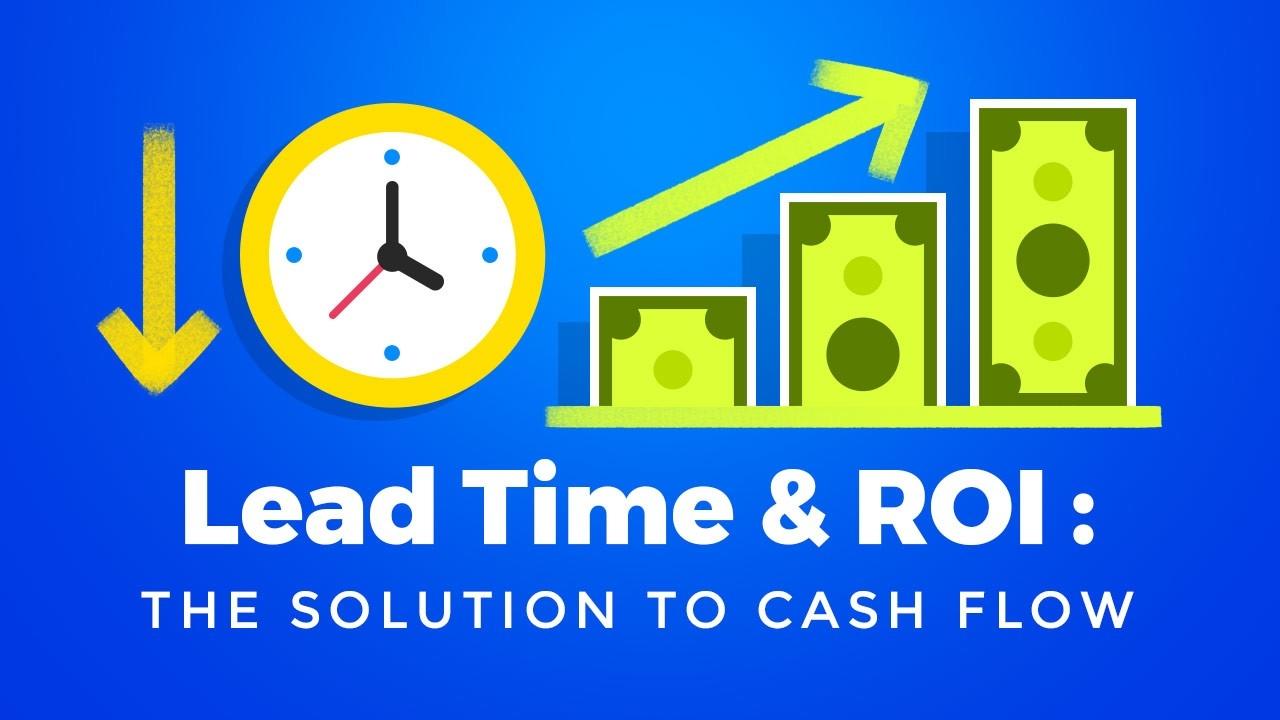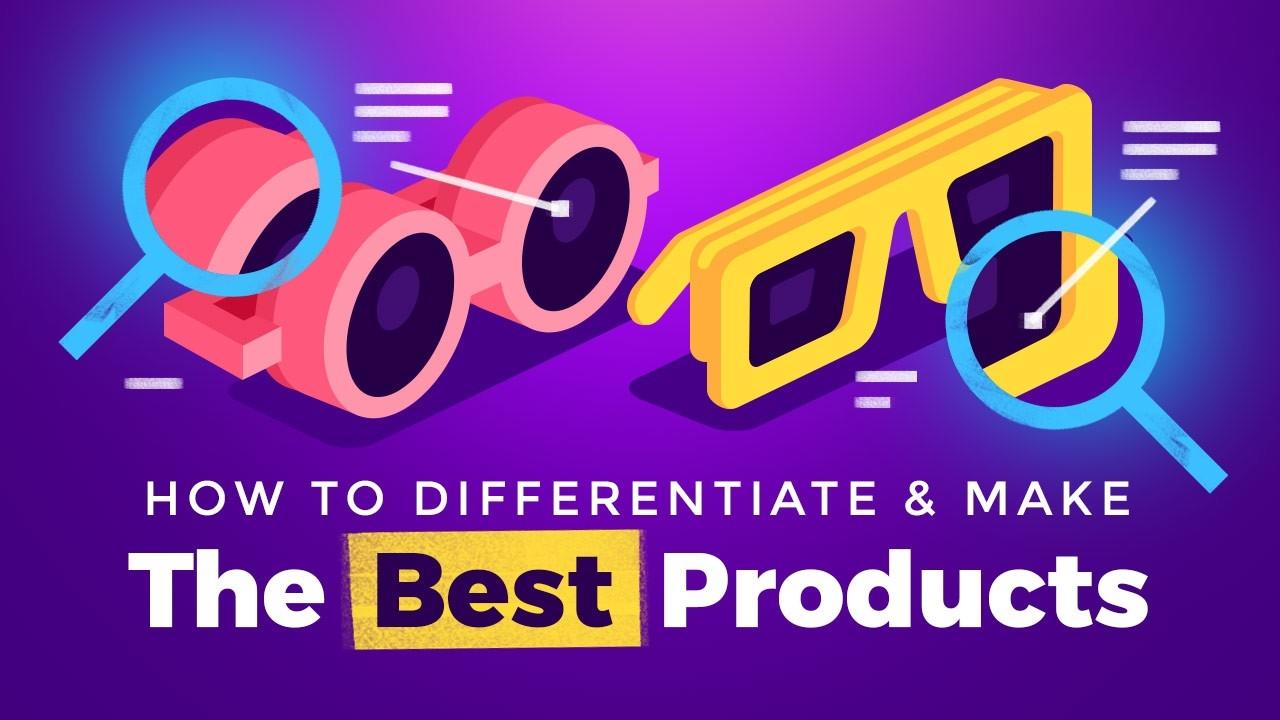7 Failed Amazon Products: 8th Product Made $6 million

At the age of 25, I made $6 million in the span of 6 months selling on Amazon FBA.
However, my journey to success was not overnight and did not come easy; I failed on my first 7 Amazon product launches.
My 8th product went on to gross over $6 million in only 6-month, forever changing my life in the process.

In other words, It took 7 failures and consequently 7 lessons before my 8th product went on to make me a multi-millionaire at only 25 years old.
That's because I didn’t give up, I learned from each experience and persevered.
Failure is not only part of the Amazon journey, but entrepreneurs from all walks of life can relate at some level.
Unfortunately, with most people, you only get to see their success, not the failures and lessons that came before they were successful.
I believe the most important lessons often come from failures if we are willing to reflect on them and learn from those experiences.
In this post, I’m going to show you every single product failures and the valuable lessons I learned from each experience.
My hope is that by sharing my failures and lessons, I can encourage you to not fear failure while pursuing your product opportunities.
If you’ve already started on your journey and are facing roadblocks, push-through despite the fear of failure.
I want you to learn from my lessons so you can duplicate my successes without having to fail as many times as I did.
Expected Value Approach To Opportunities
Even though the following examples are products that I’ve failed on, I’ve always approached opportunities, including the 7 outlined in this post, with the expected value framework in mind. In each scenario, I’ve always pursued opportunites where the potential rewards were way higher than the cost or risk of loss.
This essentially allowed me to always minimize risk and loss as much as possible. Because I approach opportunites with this in mind, it would take just one successful idea to make up for all my losses or failures.
Approaching products with the expected value framework also always forced me to have a back-up plan in each scenario. Furthermore, I always knew what the potential gain was, the downside or risk was, and how I can liquidate to recoup my initial investments.
Let’s get started and look at the products I’ve failed on, why I failed and the lessons I’ve learned from each experience.
Lessons From 7 Failed Amazon Products
LED Strip Lights

The first product I launched on Amazon was this individually programmable LED strip lights.
Why Did I Launch This Product?
At the time I launched these LED light strips, I was personally in the ‘hackerspace’ and inventing products, especially products having to do with lights.
I also had a business where I was outfitting party buses with LED lights. As you can tell, I have an affinity for lights.
Because these LED strip lights were individually programmable and also waterproof, I thought it would make a great product idea to launch on Amazon.
What Was My Back-up Plan?
If it didn’t work out, I knew I could use these lights for myself. I also figured I could potentially sell them over the next few years to inventors like myself.
With this in mind, I pulled the trigger and launched my first product.
How much was the cost?
| Cost | Units Ordered |
|---|---|
| $10 | 50 units |
I bought 50 units at about $10 per unit for a total investment of $500.
Why Did This Product Fail?
The product was a great idea for someone like myself, who was into programming lights or inventing. This, however, is not the case for most people shopping on Amazon.
Lessons Learned
- Ultimately, the sales were very low for this product which means there was not enough demand for individually programmable LED strip lights. I learned that you must verify there is enough demand for a product before you launch it.
- You can’t invent new products and succeed on Amazon. Your goal should be to capture the demand already present on the Amazon platform by providing what customers are already searching for.
- You have to make sure that the market you are going into is big enough. Make sure sales are also distributed across the market and not only one seller or brand is getting all the sales. This means you will be able to enter the market and compete.
80/20 Principle Coffe Mug

Why Did I Launch This Product?
A lot of entrepreneurs such as myself know about the 80/20 principle and a lot of them also drink coffee. This led me to believe that it could potentially be a hit product on Amazon.
Because this was a product I personally wanted myself, I logically assumed others would also want it, either for themselves or as a gift.
What Was My Back-up Plan?
As a backup plan, I figured if the coffee mugs did not sell, I could always try and sell them directly to businesses.
I also thought they could make a great gift at entrepreneurial meet-ups, where I can use them as part of a branding strategy.
How much was the cost?
| Cost | Units Ordered |
|---|---|
| $3.50 | 300 units |
I purchased 200 units of these mugs at $3.50 per unit for an initial investment of $700.
Why Did This Product Fail?
I was not able to rank for the keywords around the 80/20 principle because Amazon primarily cataloged those keywords for books. I was also not able to rank for the keywords “gifts for entrepreneurs” If you did not know what the 80/20 principle was you ultimately would not buy this product.
Lessons Learned
- You can’t make an innovative nitch product and try to launch it on Amazon, it will not work. Whatever products you launch must make logical sense for the keywords you are targeting.
- If you are aiming to be innovative with a product on Amazon, you have to innovate within the already present demand on the platform.
- To innovate completely from scratch, you have to go to a platform like Shopify and facebook where you can introduce a product to a targeted demographic and drive external traffic to it.
80/20 Principle Wristbands

At around the same time I launched the coffee mug, I also launched these 80/20 wristbands
Why Did I Launch This Product?
I thought the 80/20 principle would also be a great idea on wristbands. I added the quote “ Think smarter, not harder” and brought it to market.
Just as I did with the coffee mug, I thought it made logical sense for entrepreneurs or as a gift for entrepreneurs.
What Was My Back-up Plan?
My approach with the wrist bands was the same as the coffee mug, I figured I could always sell them to businesses who can utilize them as gifts or as part of a branding strategy.
How much was the cost?
| Cost | Units Ordered |
|---|---|
| $0.35 | 1000 units |
I ordered 1000 units of these wristbands at $0.35 per unit for a total initial investment of $350.
Why Did This Product Fail?
Although there are people out there searching for motivational wristbands and gifts for entrepreneurs, the concept of the 80/20 principle just didn’t match with the search volume on Amazon.
Just as with the coffee mugs I was not able to rank for the keywords where people are searching for entrepreneurial gifts.
However, unlike the coffee mugs, the wristbands had high margins.
Lessons Learned
- You need to make sure you have search volume behind the products you launch. More importantly, the search volume has to match the shopper’s intent and make sense as soon as they see it.
- Just as with the coffee mugs, the biggest lesson here is to be innovative within the already present search demand on Amazon’s platform.
- A positive takeaway from this failure is that I realized products with high-profit margins made it easier to compete on Amazon.
Serenity Prayer Wristbands

Encouraged by the profit margins on the 80/20 wristbands, the next product I launched were these serenity bracelets.
Why Did I Launch This Product?
From the previous last two products, I finally learned the lesson that you need to go where the search demand is to succeed on Amazon.
I looked at the data and saw there was search volume for the keyword serenity bracelet. Because people were buying bracelets with serenity prayers on it, I decided to enter the market with a design of my own.
What Was My Back-up Plan?
I didn’t really have a back-up plan for these wristbands, I was primarily just encouraged by the demand already present for serenity bracelets and took action.
I also figured if things did not go as planned I could at least sell them at wholesale to churches at cost or for a small profit.
How much was the cost?
| Cost | Units Ordered |
|---|---|
| $0.35 | 1000 units |
I ordered 1000 units of these wristbands at $0.35 per unit for a total initial investment of $350
Why Did This Product Fail?
This product ultimately just wasn’t very good, It was just okay and not very impressive or did not stand out from the competition. The quality of the wristbands was also not very good.
Lessons Learned
- Quality on Amazon is non-negotiable. you will not succeed with just an okay product as competition will drown you out.
- Customers come to Amazon ready to buy, and they will always choose the products with the best quality and review.
Hippie kaleidoscope glasses

My next product failure was these crazy looking EDM inspired hippie glasses.
Why Did I Launch This Product?
When I launched these glasses I initially thought there would be demand for them at places like music festivals.
When I also looked at the Jungle Scout sales data, it showed that these glasses were selling around 2000 units per month which led me to believe it was a killer opportunity.
What Was My Back-up Plan?
Given that I go to music festivals a lot, I figured if the glasses didn’t sell on Amazon I could always sell them at a festival in person and at least get my money back.
How much was the cost?
| Cost | Units Ordered |
|---|---|
| $4 | 150 units |
I got these glasses for about $4 per unit and I ordered 150 units for a total investment of $600
Why Did This Product Fail?
The volume I thought would be there for these glasses just was not there. Jungle Scout sales estimate for this product was wrong, the data showed around 2000 units per month and in reality, there were only about 100 units of sales per month.
The majority of those sales was also only going to one main seller, which I later figured out was a brand with recognition within the market.
Lessons Learned
- You have to make sure the estimated demand is actually accurate before you launch a product. Don’t just rely on sales data from Jungle Scout, use the 999-method or another sales estimator to verify the demand.
- Make sure the sales for a given product are evenly distributed across the market. This means you have to make sure that all the sales are not just going to one seller, who could be selling a lot of units because they have brand recognition or are driving external traffic to their products.
- Differentiate from the competition and give sellers a reason to choose your product over the competitors. You can’t compete on just price on Amazon, you will always lose to direct sellers from China who can afford to price products very low.
- You have to make sure that not only is your product unique and differentiated but that it actually works as intended. Although my metal frame glasses were unique, if you jump up and down with them - as people do at raves and parties, the glasses easily fall off your face.
Hippie kaleidoscope goggles

The next product I launched was these kaleidoscope hippie goggles.
Why Did I Launch This Product?
I really felt like I was getting close to the last product launch - the hippie glasses. I repurposed the metal frame glasses and decided to launch them as goggles.
I figured if I can solve the problem of the glasses falling off the customer’s face, that I might have something
What Was My Back-up Plan?
My back-up plan was the same as the previous product, I figured if the goggles didn’t sell on Amazon, I could always sell them at festivals in-person to recoup my investment.
How much was the cost?
| Cost | Units Ordered |
|---|---|
| $2.50 | 150 units |
I was able to get these goggles for $2.50 and I ordered 150 units for a total investment of $375.
Why Did This Product Fail?
The goggles worked a lot better relative to the metal frame glasses and I was proud of the overall quality of the product.
The problem with the goggles, however, was that I had no form of differentiation in the market
This meant I was not able to compete on price alone as the Chinese sellers were able to drive the price down, making it impossible to survive in this market.
Lessons Learned
- Not only do you need to have quality products on Amazon but you must also differentiate yourself from the competition if you want to succeed.
- Differentiate from the competition and give sellers a reason to choose your product over the competitors. You can’t compete on just price on Amazon, you will always lose to direct sellers from China who can afford to price products very low.
Furry kaleidoscope goggles

My next and last failed product was these furry kaleidoscope goggles.
Why Did I Launch This Product?
I knew there was a demand for the kaleidoscope goggles but with the last version, my problem was that I did not differentiate from the market and therefore could not compete on price alone.
I knew I could potentially succeed in the hippie/rave goggle market if could figure out a way to stand out and rank.
What Was My Back-up Plan?
Given that I go to music festivals a lot, I figured if these didn’t sell on Amazon I could always sell them at festivals in-person to recoup my initial investment.
How much was the cost?
| Cost | Units Ordered |
|---|---|
| $2.50 | 150 units |
I was able to get these goggles for $2.50 and I ordered 150 units for a total investment of around $375.
Why Did This Product Fail?
Now that I differentiated from the other competitors and was the only one with furry kaleidoscope goggles, I thought I had a good chance to succeed.
However, I solved the problem of differentiation and forgot to account for quality. The problem with furry goggles is the fur easily came off which was bound for negative reviews on Amazon.
The goggles were great in theory, but not in practice.
Lessons Learned
- You must find products with enough search volume and demand where you can compete. Once you identify the demand, you need to also find a way to differentiate a stand out in the market.
- After making sure there is demand, you are differentiated from the competition, another important factor - if not the most important, is quality.
- Quality is simply non-negotiable on Amazon. Without quality products, you will get bad reviews and lose to your competition.
After failing over and over again, part of me felt like giving up and moving on. Thankfully I did not, instead, I asked myself what can I learn from this? How can I use these lessons to my advantage?
After reflecting on all my previous failures, I took the lessons from each experience and applied it to the next opportunity - the 2017 solar eclipse.
From the 7 failures, I now knew:
- To succeed on Amazon, you need to go where the demand or high search volume is. Millions of shoppers come to Amazon every day, not to browse - but ready to buy a product. As Amazon sellers, our job is to provide these customers with the best option possible.
- You must go into markets where you can innovate within the already available demand. Amazon is not a platform where you can invent products from scratch, your goal should be to capture part of the available search volume by making something unique where you can add value and differentiate yourself from the competition.
- Quality on Amazon is non-negotiable. Customer’s come to Amazon knowing what they want, they will always choose the best quality product they can find for a given search term. This is why Amazon reviews are so important for long term success.
- Unless you have a lot of capital where you can afford to earn low-profit margins in hopes of selling a lot of units, you can’t compete on just price on Amazon. You must have a competitive edge over your competitors in any given market. After all, why should the customer choose your product over a listing with lower prices and more reviews?
I Took all these lessons and applied them to the next product opportunity with the solar eclipse glasses.
I verified that there would be demand for the solar eclipse. The data showed there would be over 10 million people in the U.S. who would potentially see the solar eclipse. I set out to capture just 1% of that demand.
I decided to source the best quality glasses with the safest lenses for viewing the solar eclipse. I knew that positive reviews on Amazon had a snowball effect. Good products lead to positive reviews, which in turn lead to more sales.
I innovated within the market and created a new product that was currently not available. This meant I would not risk having to get into a price war with sellers who can afford undercut my prices.
I created different variations to meet every customer’s needs which allowed me to capture most of the market share. Not only did sell goggles but I later created different designs and quantities and ultimately had over 100 listing variations.

These goggles and glasses were the end-result of the lessons I’ve learned from falling on 7 different Amazon product launches.

Executing on the lessons I’ve learned from my previous experiences led to achieving the best business results of my life.
More importantly, I was extremely proud of myself for not giving up. I could have stopped after the first failure, or maybe even the third or fourth but Instead I kept going and was ultimately rewarded for it.
I’m a walking testament, that if you never give up and keep learning from your experience -- sooner or later you will achieve your goals.
Watching that solar eclipse in that exact same goggles I brought to market was one of the best experiences of my life
So, how was I able to do $6 million in sales in just 6 months on Amazon FBA?
My journey to success was not overnight, It took failing on my first seven Amazon product launches to learn what it takes to succeed on Amazon FBA.
Why did I fail? Simply put, I did not have the information and tools I have now. Through trial and error, I learned from each failure and ultimately succeded.
Why failed on those 7 products
- Making sure the market was big enough with distributed sales
- I didn’t know how to validate demand and what tools to use offering.
- Not to invent but capture the already available demand
- Differentiating from the competition and adding value
- Quality is key to long-term success on Amazon
I eventually learned the importance of these factors to success on Amazon; I approached my 8th product with this mindset and forever changed my life!
I hope you are able to take some lessons from my experience so you don’t have to repeat my mistakes but instead duplicate my success.
If my journey resonates with you at any level, please leave a comment and let me know what failures you’ve had as an entrepreneur or just launching products on Amazon.
Through sharing the failures and the perseverance that we all go through, we can encourage one another to start on their own journeys or continue to keep pushing through hard times.
Success is often closer than we think if we don’t give up on our goals and dreams.
Everyone is typically only posting and sharing the things that worked but I think we can learn just as much if not more from failures if we approach it with the right mindset.
Watch my 7 failed products and lessons video so you can take note of what worked for me in succeeding on Amazon and duplicate it!

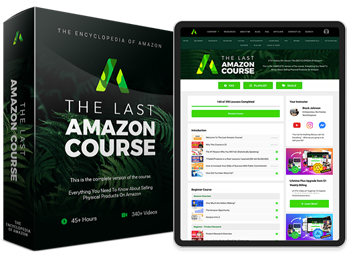
Over 375+ videos (45+ hours)
Interviews with other million dollar sellers and CEO's, and much more
